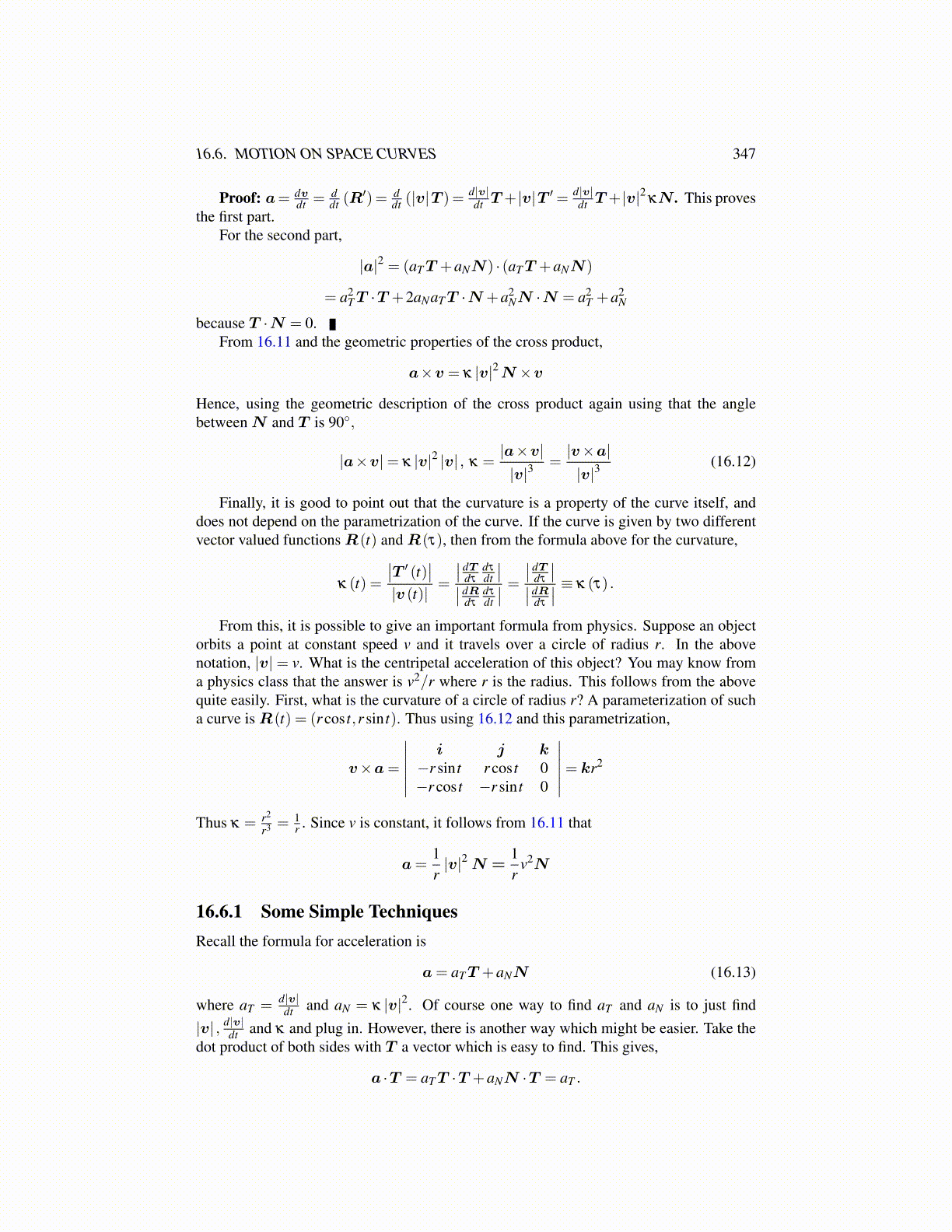
16.6. MOTION ON SPACE CURVES 347
Hence, using the geometric description of the cross product again using that the anglebetween N and T is 90◦,
|a×v|= κ |v|2 |v| , κ =|a×v||v|3
=|v×a||v|3
(16.12)
Finally, it is good to point out that the curvature is a property of the curve itself, anddoes not depend on the parametrization of the curve. If the curve is given by two differentvector valued functions R(t) and R(τ), then from the formula above for the curvature,
κ (t) =
∣∣T ′ (t)∣∣
|v (t)|=
∣∣ dTdτ
dτ
dt
∣∣∣∣ dRdτ
dτ
dt
∣∣ =∣∣ dT
dτ
∣∣∣∣ dRdτ
∣∣ ≡ κ (τ) .
From this, it is possible to give an important formula from physics. Suppose an objectorbits a point at constant speed v and it travels over a circle of radius r. In the abovenotation, |v| = v. What is the centripetal acceleration of this object? You may know froma physics class that the answer is v2/r where r is the radius. This follows from the abovequite easily. First, what is the curvature of a circle of radius r? A parameterization of sucha curve is R(t) = (r cos t,r sin t). Thus using 16.12 and this parametrization,
v×a=
∣∣∣∣∣∣i j k
−r sin t r cos t 0−r cos t −r sin t 0
∣∣∣∣∣∣= kr2
Thus κ = r2
r3 = 1r . Since v is constant, it follows from 16.11 that
a=1r|v|2 N =
1r
v2N
16.6.1 Some Simple TechniquesRecall the formula for acceleration is
a= aTT +aNN (16.13)
where aT = d|v|dt and aN = κ |v|2. Of course one way to find aT and aN is to just find
|v| , d|v|dt and κ and plug in. However, there is another way which might be easier. Take the
dot product of both sides with T a vector which is easy to find. This gives,
a ·T = aTT ·T +aNN ·T = aT .
Thus a= (a ·T )T +aNN and so
a− (a ·T )T = aNN (16.14)
and taking norms of both sides, |a− (a ·T )T |= aN . Also from 16.14,
a− (a ·T )T
|a− (a ·T )T | =aNN
aN |N | =N.
Also recall κ = |a×v||v|3
, a2T +a2
N = |a|2 This is usually easier than computing T ′/∣∣T ′∣∣. To
illustrate the use of these simple observations, here is a simple example.